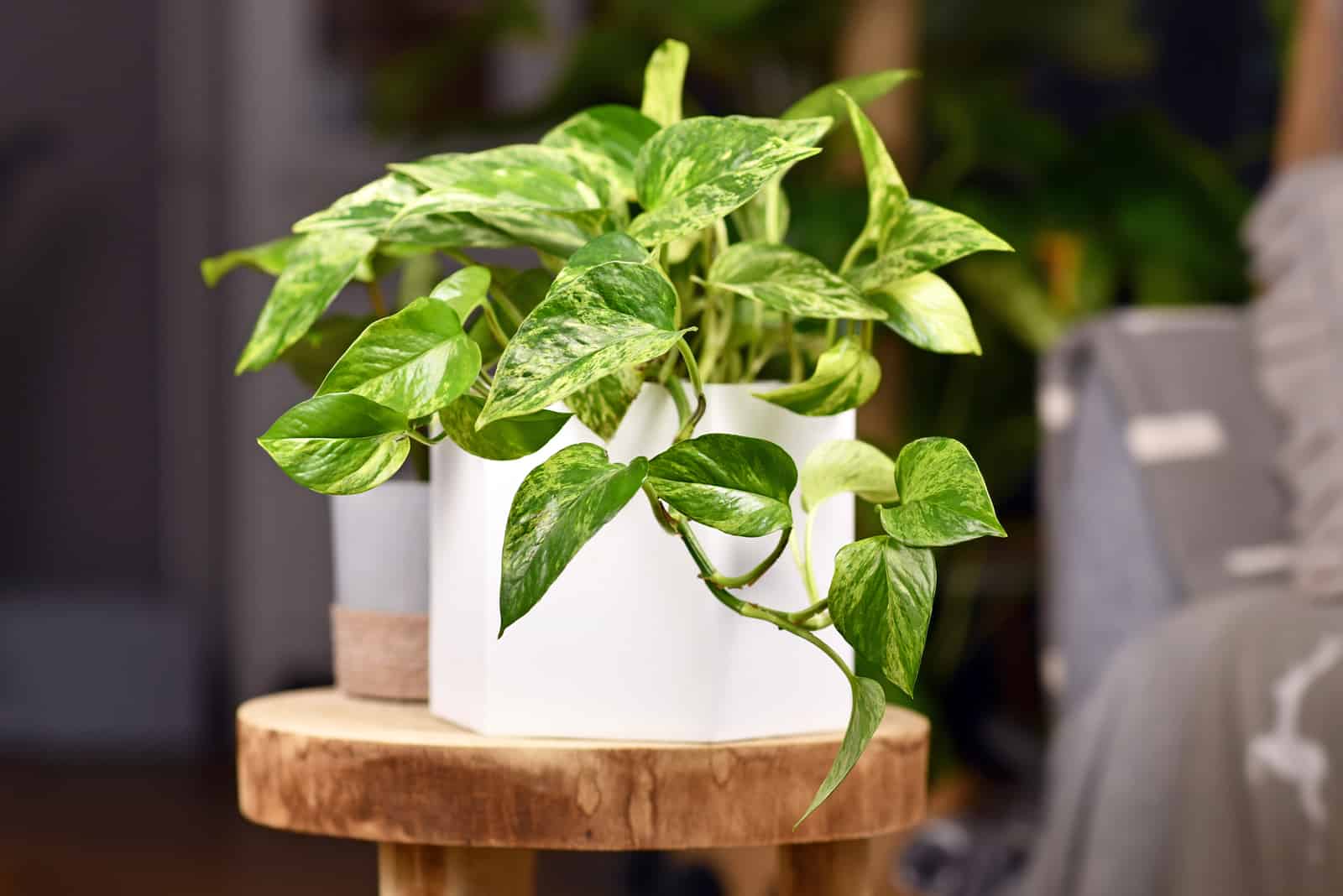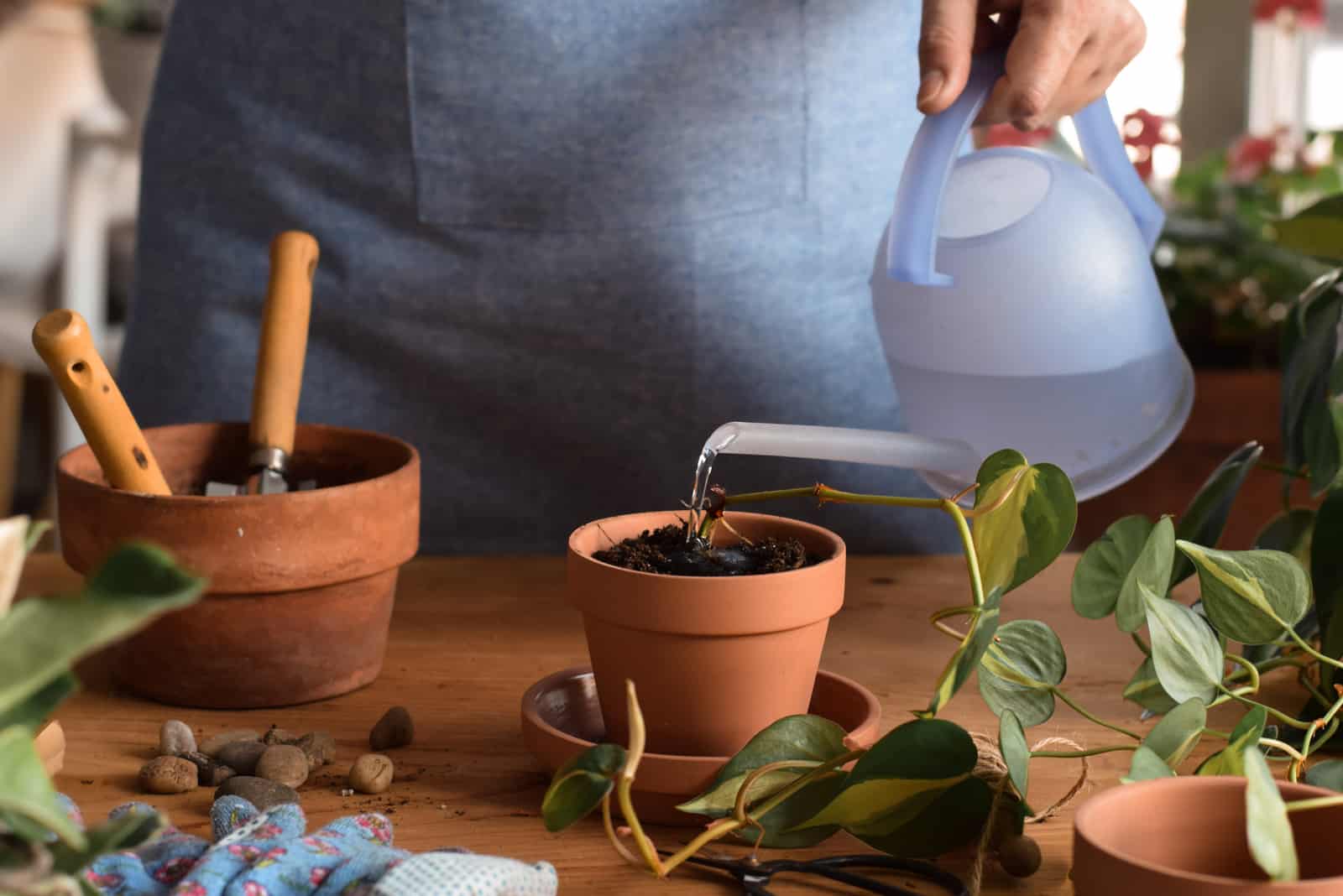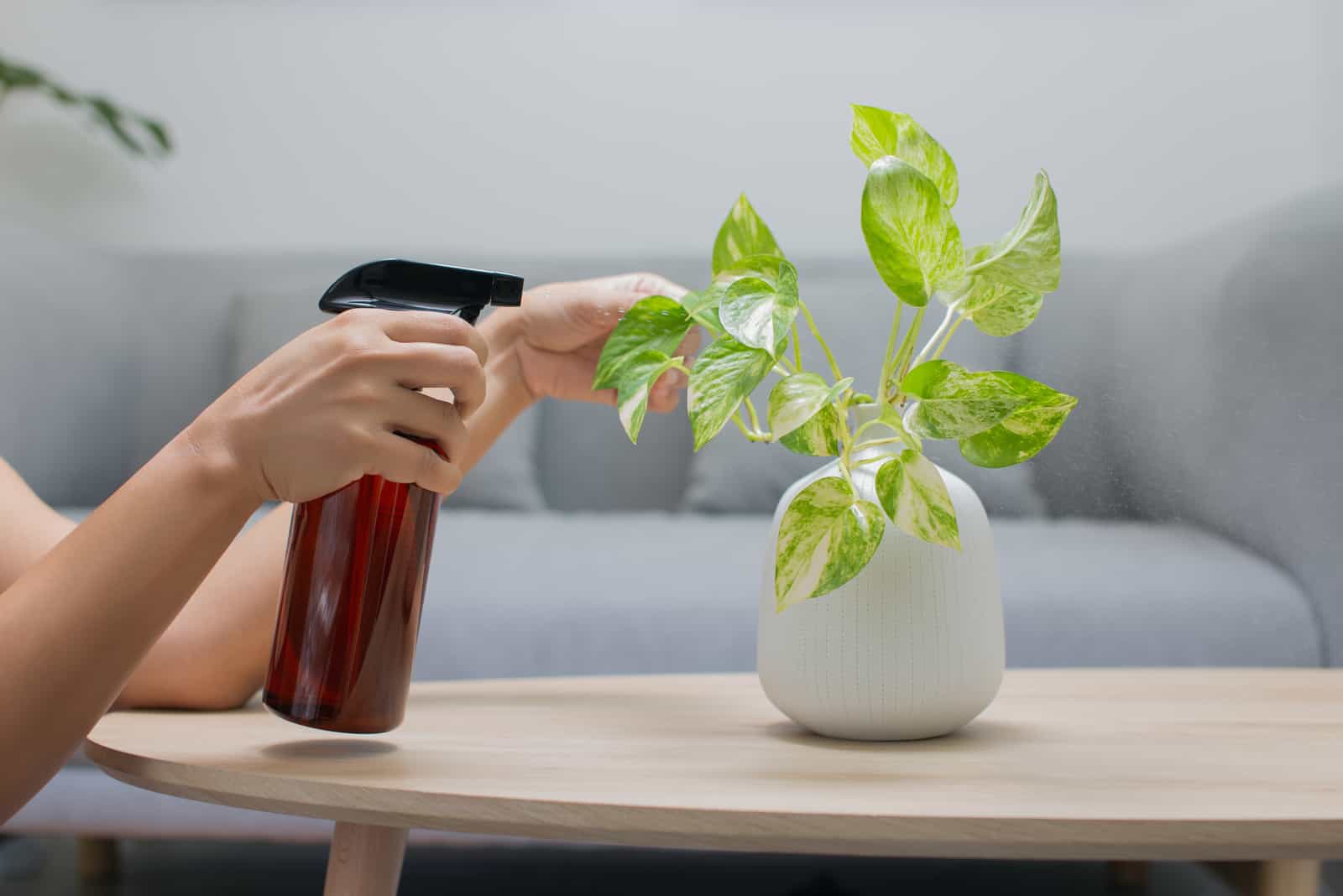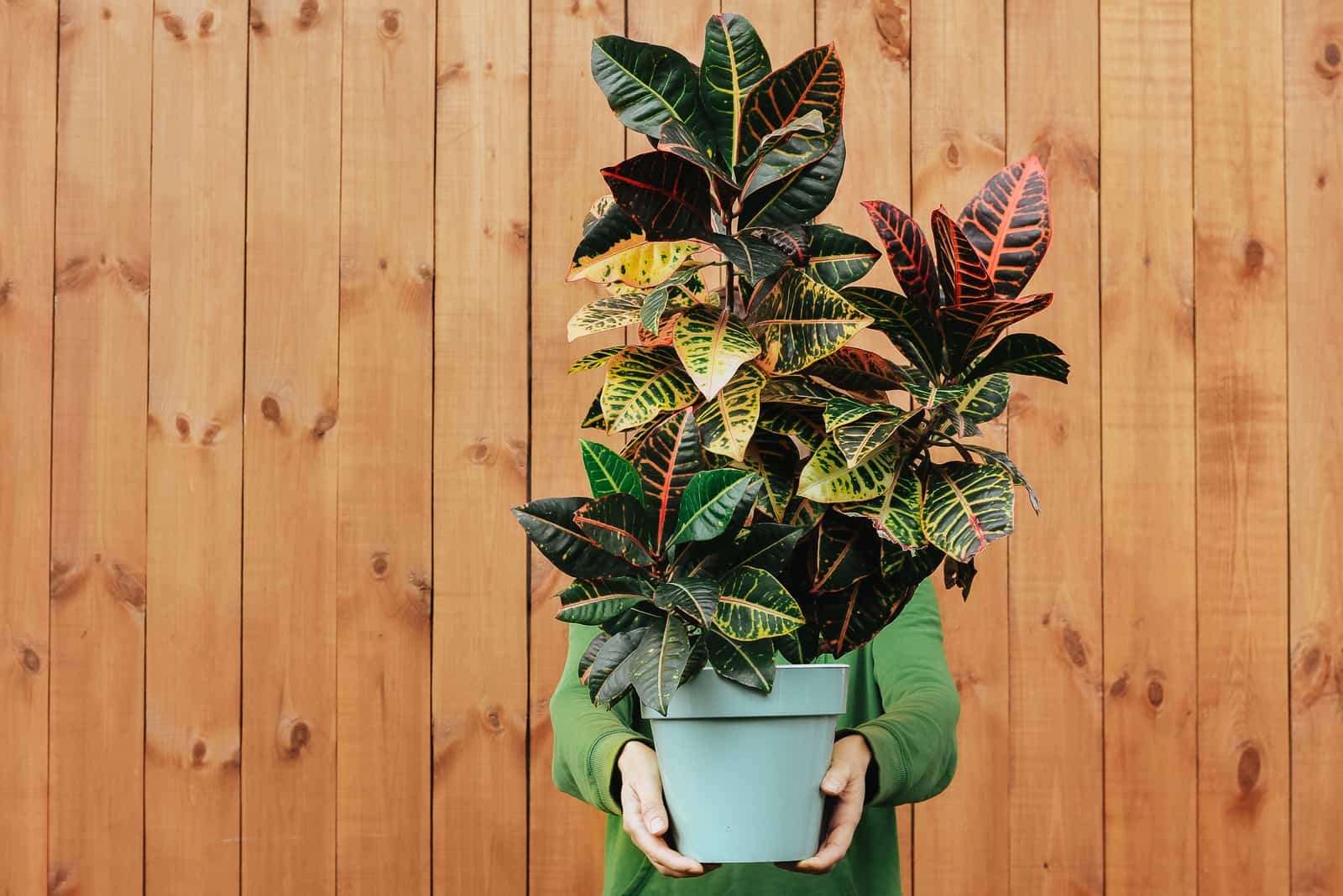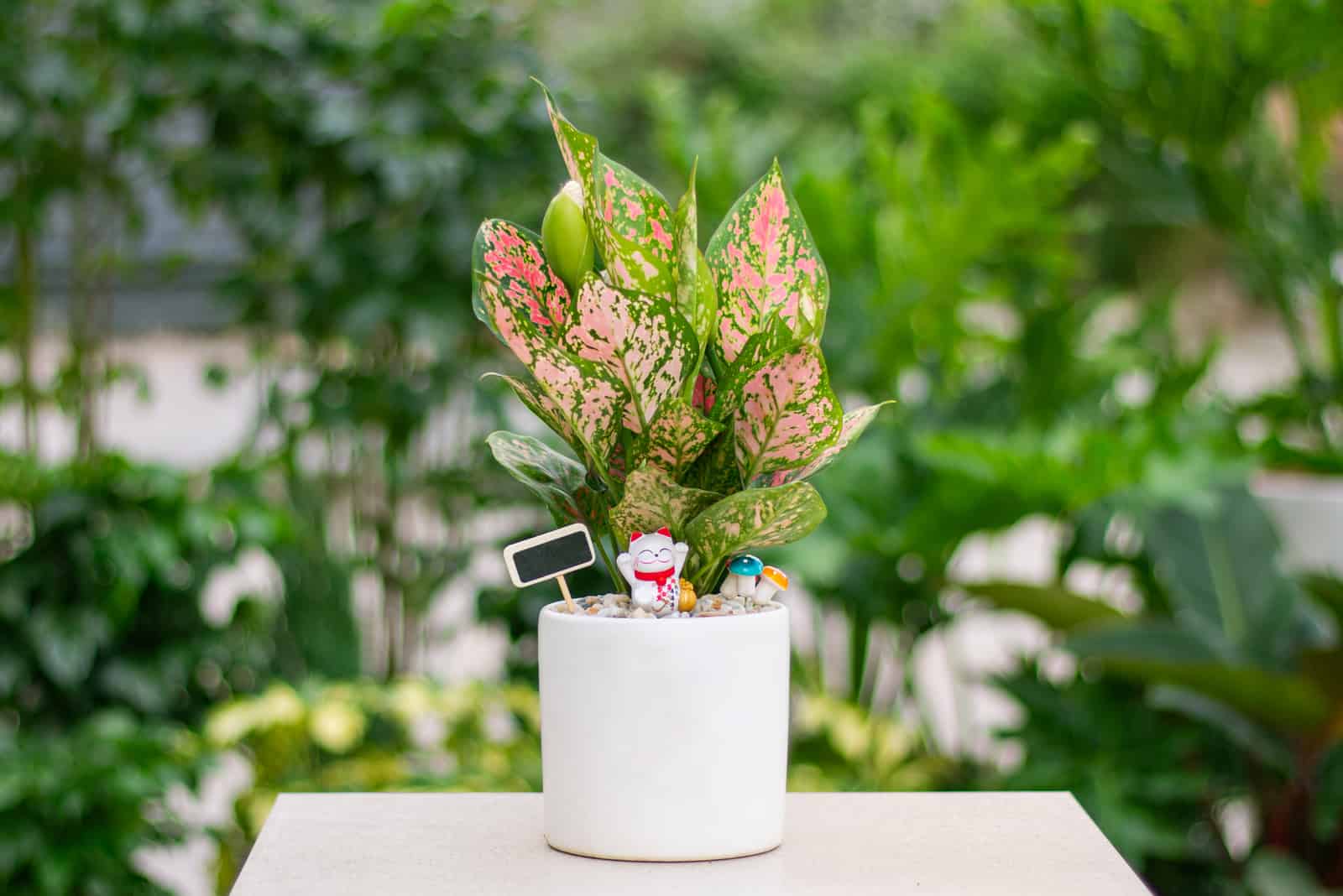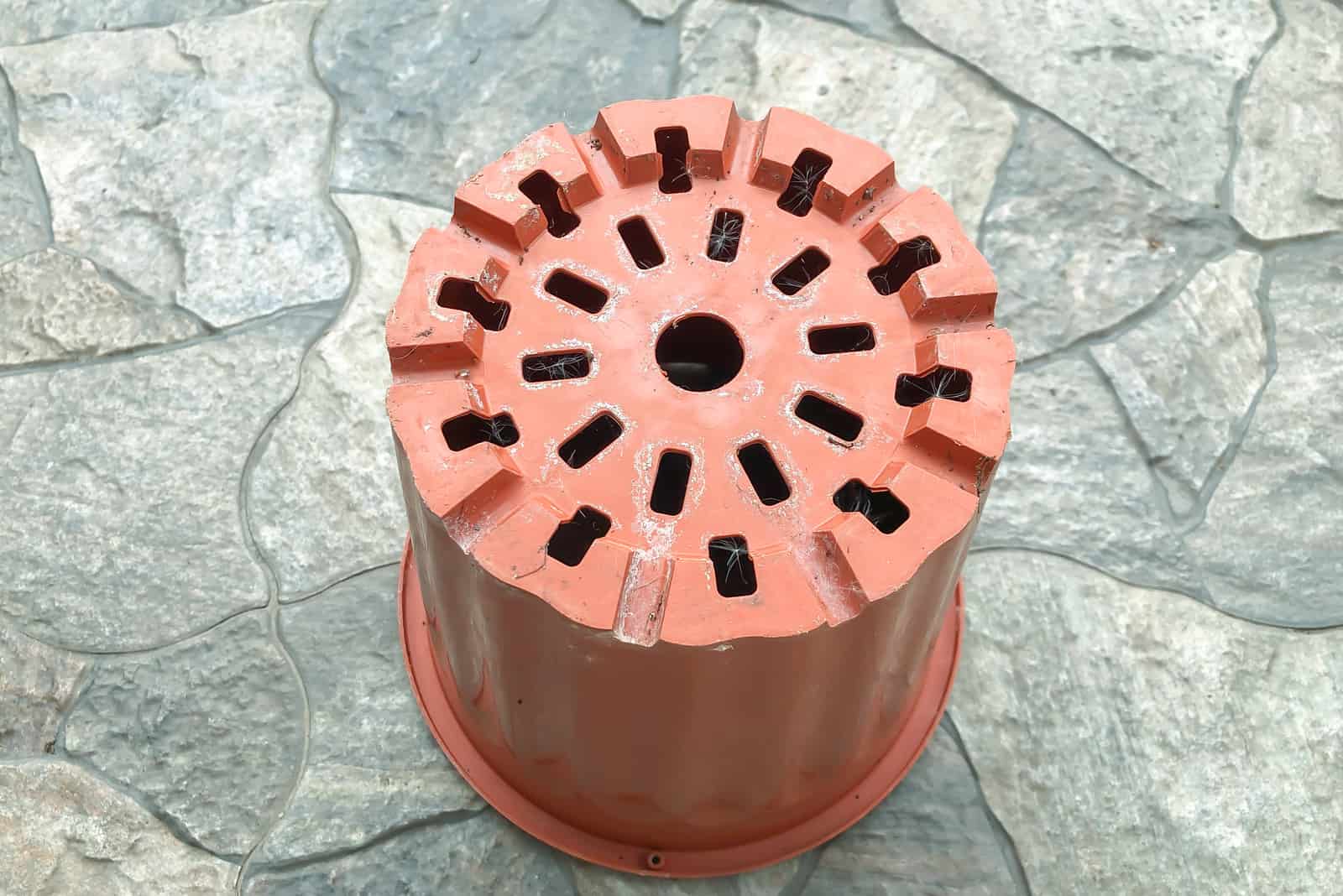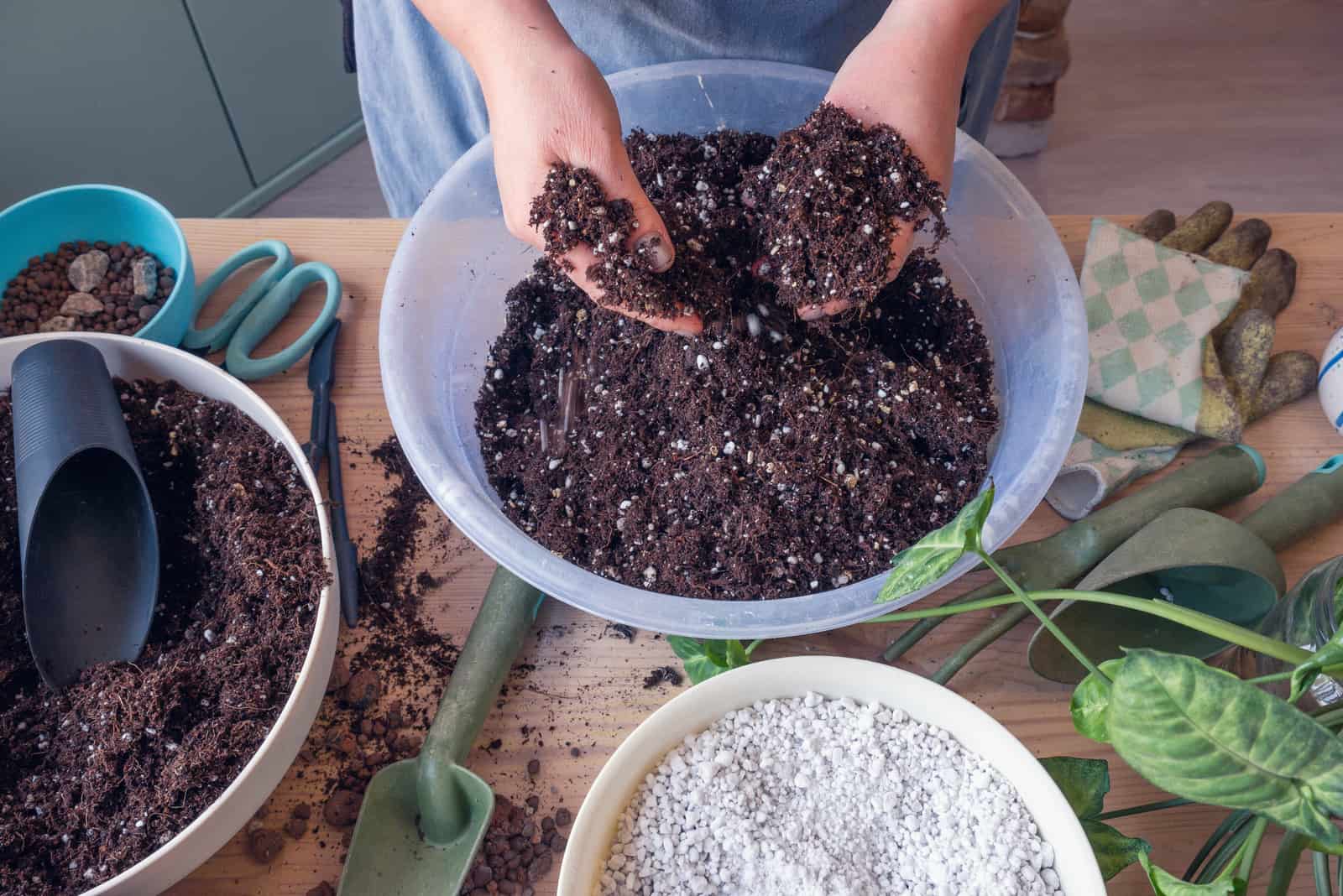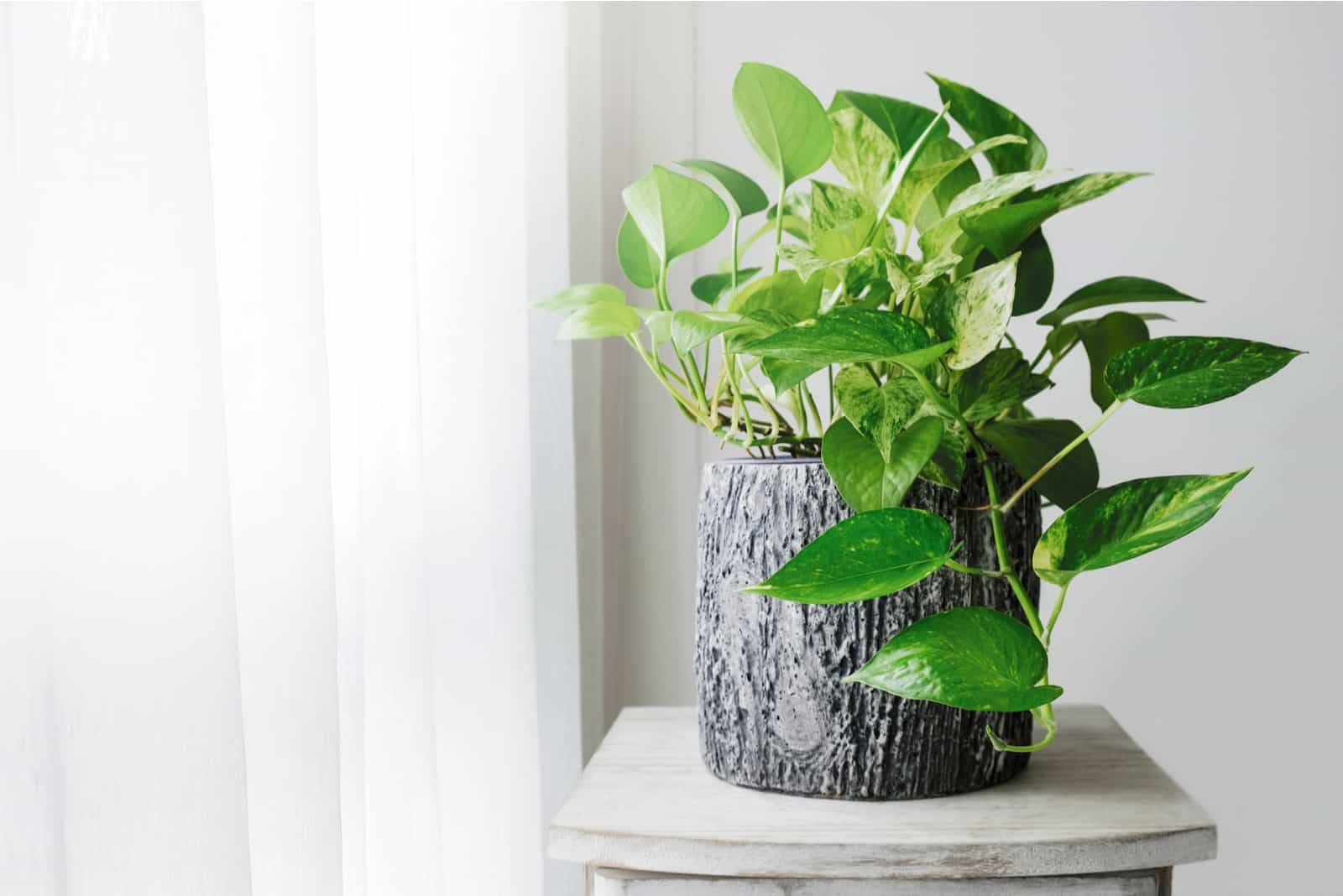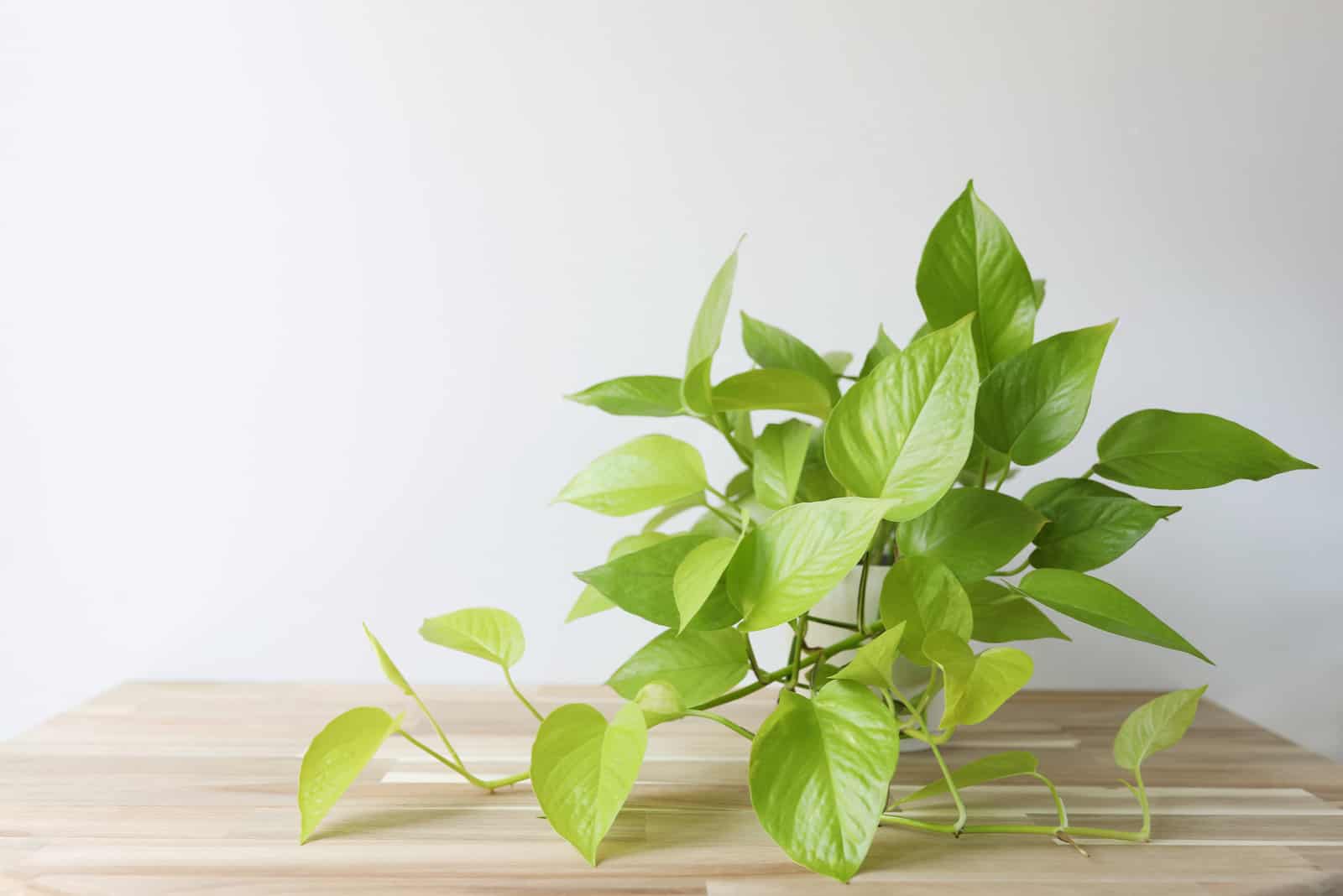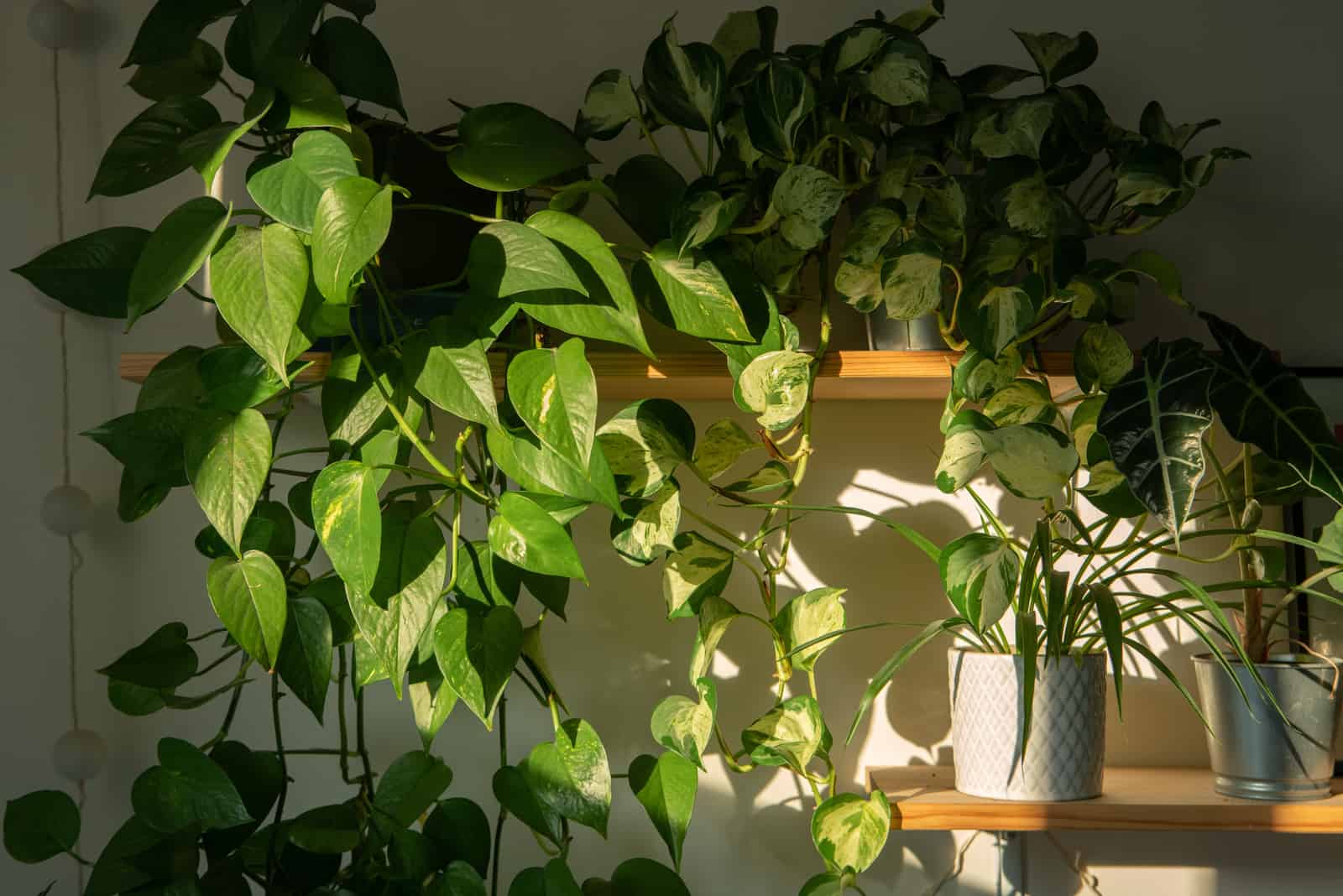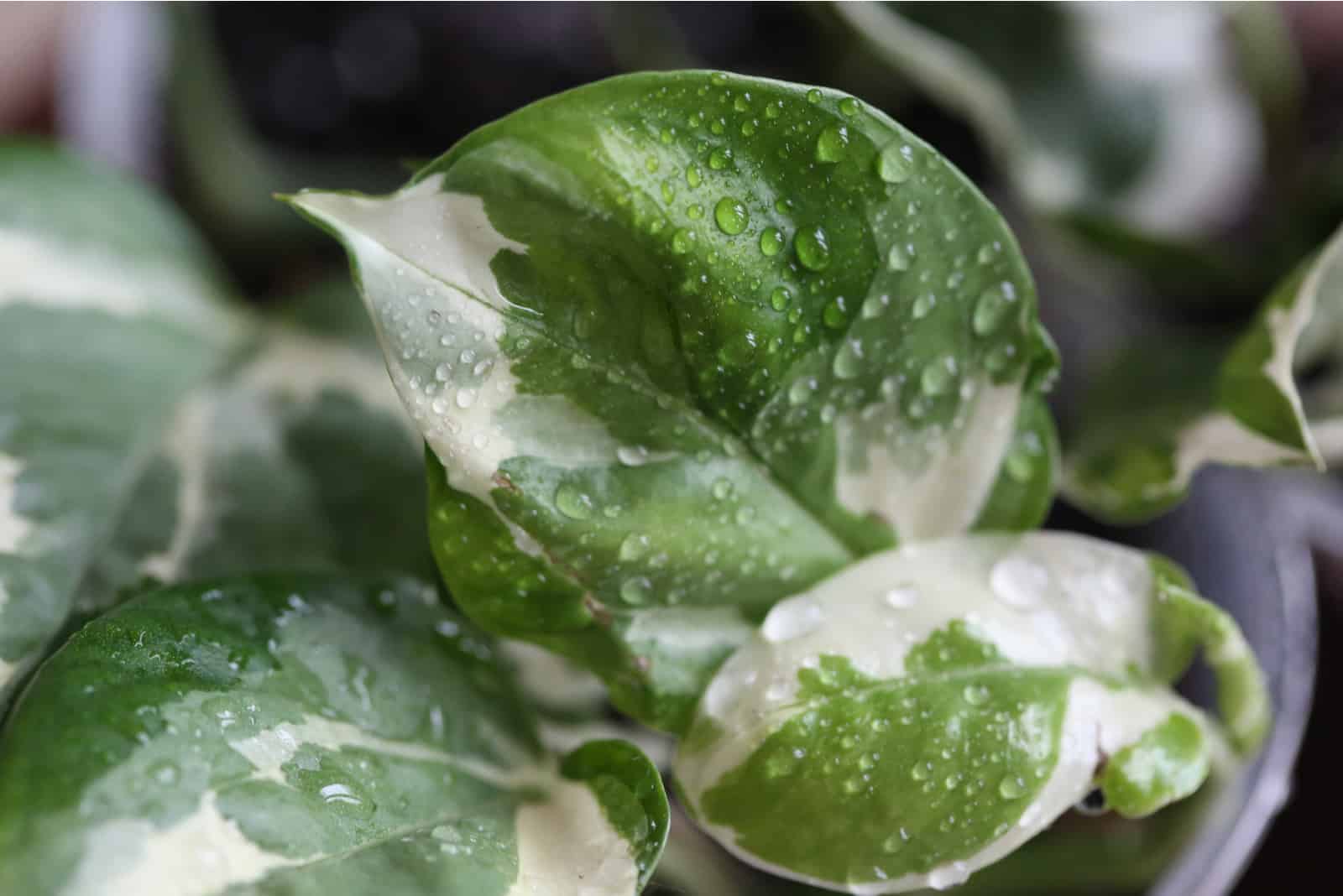If you have just bought a new pothos plant, and now you are unsure whether you need to put it in a pot with drainage holes at the bottom — trust me, we’ve all been there!
There is an ongoing debate about whether pothos need drainage or not, and let me tell you that there are a lot of different opinions!
Luckily, we have done our research, and now we are going to get to the bottom of this question.
Pothos, also known as Devil’s ivy, are beautiful indoor plants that can make any room look more lively and are known for being used to attract good luck and prosperity. They are also pretty easy to take care of, which is why they are perfect plants for beginner gardeners.
So, let’s start from the very beginning and answer the famous question “Do pothos need drainage?”.
But Honestly, Do Pothos Need Drainage?
Honestly, yes. There is a common mix-up with these types of plants because some pothos varieties can be grown in standing water. Knowing this, it can be easy to conclude that they can grow in pots without drainage holes.
However, when you choose to grow your pothos plant in potting soil it must have good drainage because it can be easily waterlogged. Root rot is most likely the outcome of this, which can damage your plant to the point it can no longer be saved.
As pothos are tropical plants originating from deep rainforests, they are used to constantly moist soil. Therefore, they should be watered frequently.
If there is no drainage, excess water is unable to drain away and the soil would be wet all the time. Remember, they like moist, but not wet soil, and these are two different things.
I must mention that some people grow pothos without drainage holes in the bottom of the pot. They say that they let the soil completely dry between waterings, however, this is a risky game.
I mean, why wouldn’t you provide your plant with the best possible plant care?
Even if you find a nice decorative pot that doesn’t have drainage holes in the bottom, you can always drill them by yourself or put the plant in a plastic pot that has drainage holes in the bottom.
If you are still unsure whether your pothos needs proper drainage, let’s look at some of the issues that can be caused by improper drainage.
Issues Caused By Improper Drainage
Overwatering is the first issue that can be caused by inadequate drainage. Overwatering is usually manifested by the yellowing of the leaves, followed by root rot.
When the soil stays wet for too long, it prevents the air from reaching the plant’s roots and also attracts various pests and fungi that can harm your plant.
Overwatering
It is important to keep soil moisture levels high, but there is a chance that you might overdo it. When you give your plant more than enough water, it can get waterlogged.
If this happens, your beloved houseplant can’t absorb nutrients normally and the air can’t reach your plant’s roots. You will basically end up suffocating your plant!
However, a few other things can contribute to overwatering in addition to giving your plant a large amount of water. You should also be aware of humidity levels, draining soil, and temperature!
For instance, you will have to water your plant much more frequently during summer as the water evaporates quickly and the soil dries out, and during winter you should think about the humidity because the air gets drier, so you should mist your plant.
Overwatering is usually manifested by yellowing of the leaves and overall wilting of the plant. To avoid overwatering, find a perfect watering schedule and use proper potting mix. Bear in mind that these plants need drainage holes at the bottom of the pot!
In the worst-case scenario, overwatering will lead to root rot (sadly, this happened to my Monstera plant at the beginning of my gardening journey).
Root Rot
Root rot is a deadly fungal infection that starts by destroying the root, which is the most important part of your plant!
Before you know it, the whole plant is utterly destroyed by this disease.
If you notice the soil starts smelling funky, you are probably dealing with root rot. In this case, repotting is necessary if you want to save your plant!
This is done by getting rid of all the previous soil — and I mean all of it! You should then use sterile pruning shears or a knife to cut all of the mushy and decaying roots. Put your little survivor in a new pot with new draining soil, and hope for the best!
What Are Some Plants That Don’t Need Drainage Holes?
All plant species are unique and have different needs. Most of us think that pots with drainage holes are essential for every houseplant, but you would be surprised to see how many plants don’t need drainage holes!
1. Spider Plant
Spider plants, otherwise known as ribbon plants, are one of the most popular houseplants all over the world!
Whether it’s their quirky ribbon leaves or low-maintenance requirements, plant enthusiasts are loving their spiders!
These types of plants can be grown in pots without drainage holes, however, you should let the soil completely dry out before watering it again. I personally grow my Bonnie spider plant in a pot with drainage holes because I think it makes it happier!
This decision is totally up to you, though!
As well as this, the spider plant can produce little fruits if fertilized properly, which is an interesting feature uncommon among houseplants. Bear in mind that these might not be the best plants to keep around pets and kids because they are toxic and can cause some health issues if ingested.
2. Snake Plant
Snake plants aren’t called that for no reason — they’re one of the most hardy houseplants (they don’t bite, don’t worry!). Most snake plants have green, sword-like leaves with yellow margins.
These plants require minimal care and are sometimes referred to as immortal. If you want your snake plant to thrive, make sure it has sandy and somewhat acidic soil.
They thrive in partial shade and are drought-resistant, so they won’t require frequent watering. They will not grow in standing water, so allow the soil to dry between waterings.
The only thing that you need to be careful of when growing a snake plant is its temperature tolerance, because it doesn’t respond well to extreme temperature changes.
3. Croton Plant
This is a houseplant with the most vibrant and colorful leaves. The croton plant, with its amazing yellow/green leaves with orange splashes all over the surface, would make a worthy addition to any collection!
Sometimes it is hard to keep a croton plant thriving indoors, but anything is possible!
You must make sure to provide them with proper lighting conditions, which would be bright and indirect light.
These types of plants can be grown in pots without drainage holes, however, it is important to give them an inch of water every week. You should also know that they can’t tolerate any temperature fluctuations, so keep the temperature as steady as possible!
4. Cordyline
This is yet another plant that is hard to cultivate indoors, but it’s definitely worth trying!
The leathery leaves of Cordyline grow in a variety of colors, including green, yellow, red, purplish-red, white, and purple. They produce aromatic flowers that are often followed by fruit formation.
Though they can easily flourish when grown outdoors, it is hard to get them blooming when grown indoors. But I will repeat once again, anything is possible!
The ideal lighting conditions actually depend on the color of the leaves — for instance, Cordyline species with green leaves thrive in direct sunlight, while the ones with yellowish/purple leaves enjoy indirect sunlight.
You should water Cordyline species when the top of the soil is dry.
5. Chinese Evergreen Indoor Plant
Chinese evergreen plants are herbaceous perennials native to Asia that are widely grown as houseplants. Partial shade and high humidity are ideal conditions for Chinese evergreens.
Because Chinese evergreen plants like humid, warm, and light surroundings, many gardeners recommend growing them in greenhouses.
Nonetheless, they can be easily grown indoors, you just have to invest in a humidifier!
These plants come in a variety of colors, ranging from dark green to silver and scarlet. Mature plants have lovely white flowers that contrast nicely with the glossy oval foliage.
You shouldn’t allow the soil to dry out between waterings because these plants are drought-tolerant. They flourish in pots with no drainage holes and they don’t require much watering, so moist soil will keep them healthy and thriving.
6. Schefflera
Schefflera, sometimes known as the umbrella plant, has lustrous, long, oval green leaves that drape like an umbrella from the stalk. Some species can produce tiny glossy foliage with variegations.
Though these plants flourish well indoors, if you want to see their long, white, red, or pinkish tentacle-like blossoms, you should grow them outside.
Bright indirect light and healthy, somewhat acidic soil are ideal for these broadleaf evergreen plants.
These plants will not thrive in wet soil, so make sure it is completely dry before watering.
How To Get Good Drainage In Potted Plants: Tips & Tricks
Most popular houseplants require good drainage to thrive and glow!
There are a few tips and tricks that you can use to boost the drainage, including getting pots with drainage holes in the bottom. You can also consider the material of your pots (there’s a difference between porous and non-porous pots!).
However, you should also take into account the potting soil that you are using, as well as the level of humidity and temperature in your indoor garden.
Let’s get started!
1. Use Pots With Drainage Holes
Although we have already mentioned that your plant’s pot has to have drainage holes in the bottom, we simply must say it again because it is extremely important!
Drainage holes are the key to proper drainage as they allow excess moisture to drain from the soil.
This prevents your plant from getting waterlogged and allows it to normally absorb water and all of the necessary nutrients it needs to grow and develop!
Avoid using cachepots as they usually don’t have drainage holes. However, if you find one that suits your home decor, you can always drill the holes on your own.
2. Choose The Material Wisely
There are two distinctive types of materials for pots: porous and non-porous materials. What material you use depends on your watering habits.
If you tend to overwater your plants, then choose porous pots. On the contrary, if you tend to forget to water your plants, choose non-porous pots.
Porous Pots
Overwatering can be avoided by using porous pots. They are made of a material with many small holes through which air and water can pass, preventing excess moisture retention. Terracotta pots, concrete pots, and clay pots are the typical types.
They are available in a variety of colors and shapes and can be used as decorations!
The majority of these have drainage holes in the bottom of the pot and are cheap and widely available. However, you won’t be able to see your plant’s roots in these pots and they aren’t waterproof, so if the water soaks through it will leave a stain.
Non-porous Pots
Pots that are non-porous are composed of waterproof materials that do not allow air or water to flow through. Stone, glazed ceramic pots, metal, fiberglass, resin, and wood pots are examples of non-porous pots.
Beautiful non-porous pots with drainage holes can also be found and used for ornamental purposes. Some of them are also difficult to break, which is ideal if you have children or pets roaming around the house.
Bear in mind that you won’t be able to see the roots of your plant with these types of pots, and some materials might deteriorate — for instance, metal can rust and wood can rot, so you might have to repot more frequently. But hey, if it suits your aesthetic, go for it!
3. Use The Right Draining Soil
To avoid excess moisture retention, pothos plants require well-draining soil. Too much water in the soil causes root rot, so choosing the correct soil is essential.
The right soil mix and drainage holes in the bottom of the pot will help drain excess water. You can use a store-bought aroid mix or make one on your own!
To make the ideal potting mix, combine perlite, universal soil mix, vermiculite, and peat moss. You can also use potting soil for succulents, cacti, or philodendrons.
4. Find An Appropriate Watering Schedule
Gardener newbies often tend to look for a defined watering schedule, but in most circumstances a defined schedule won’t ensure your plant gets adequate water. A defined watering plan can lead to a more serious issue, which is overwatering.
Water the pothos every 5 to 7 days as a general rule. However, I prefer to carefully inspect the soil before watering.
The pothos species prefers moist soil, so letting the soil dry out completely between waterings will cause the plant to droop and the leaves to become crispy. Your pothos’ leaves will curl, which is your plant’s way of letting you know it’s thirsty.
If you see these changes, thoroughly water your pothos.
The soil, on the other hand, should not be wet. The thin root system of this plant makes it susceptible to overwatering. Excess water in the soil suffocates the roots and causes fungi to infect the soil and consume the decomposing roots.
So, how do you actually find the right watering schedule?
You’ll have to establish your own watering routine. To put it another way, you’ll need to keep an eye on the plant and check the soil on a frequent basis to determine if it needs to be watered.
Wait until the top 2 inches of soil are completely dry before watering. Sticking your finger in the soil is the simplest technique to check for moisture. You can also use a wooden stick or a toothpick, and if there is any soil left behind when you pull them out, wait a little longer before watering your pothos again.
If you provide all of the necessary circumstances for your pothos plant during the growing season, you should water it once a week (spring and summer).
Reduce watering throughout the winter months when the plant isn’t actively growing.
Quick Pothos Plant Care Guide
Now we have established the watering and soil requirements, let’s take a look at the other requirements that directly influence the watering needs of your plant.
Temperature Requirements
Pothos are tropical plants that flourish in warmer temperatures.
A pothos plant can withstand temperatures of 55 to 85 degrees Fahrenheit, while it prefers temperatures of 70 to 90 degrees Fahrenheit.
Any lower temperature would be dangerous to your pothos, and any higher temperature would be too hot to handle.
Humidity Requirements
These are tropical plants, so they like to grow in humid environments. Although your pothos plant can withstand some dry air, humidity levels should not fall below 50%.
Humidity levels between 70 and 80 percent are ideal. If you’re experiencing trouble with humidity, here are some suggestions for increasing it:
•Make a DIY pebble tray to keep your plant moist by scattering pebbles in a tray, filling the tray with water, then placing your plant on top. When the water evaporates, your plant will get the moisture it needs.
•The safest, although not the cheapest option, would be investing in a humidifier. You can set a preferred range and also set a timer to control how long it will be activated for.
•The most practical alternative is to store it in a humid location, such as a bathroom or kitchen. Just make sure it gets enough indirect light.
Light Requirements
Pothos are known for being low-maintenance plants, and that’s because they can adjust to various light conditions.
Pothos can grow normally in low light conditions, though they much prefer bright indirect sunlight. Your new plant can be placed in a hanging basket near windows or on a windowsill that doesn’t receive direct sunlight or the leaves might burn and lose their beautiful variegations!
Fertilizer Requirements
A pothos should be fertilized frequently during the growing season, but during the colder months you should avoid fertilizing.
Depending on the pothos variety, slow-release or liquid fertilizers can be applied.
Choose a nitrogen-based fertilizer because it promotes luscious foliage growth, which means your pothos plant will produce more leaves during the growing season.
Propagating
Pothos propagation is the best technique for new gardeners to learn how to propagate a houseplant because it is simple and requires little time and effort.
Root propagation and water propagation are the two methods that are commonly used.
Root propagation consists of sowing the stem cutting in the soil, while water propagation means submerging it in the water.
Repotting
Repotting is something that every plant enthusiast should know, especially if you are one that likes to change pots frequently!
Repotting is best done at the beginning of the growing season, in the spring or early summer. Repotting during the winter is not recommended because the plant is more sensitive and its roots are more easily harmed.
Pothos plants should be repotted every 2-3 years, but bear in mind that their growth rate is dependent on the environment. You should always use a pot that is slightly larger than the previous one — and also one that suits your plant and decor well!
Water your plant the day before you plan to repot it to help loosen the soil and make the procedure go more smoothly.
Fill half of the new pot with a well-draining potting mix. Fill the rest of the pot with the same potting mix once you’ve placed the plant in the middle. If you want to help the plant settle in, you can add compost.
Frequently Asked Questions
1. Should you water a pothos plant in the morning or evening?
The best time to water your pothos plant would be in the morning, though it is okay to do it in the afternoon as well.
The morning is best because it prepares your plant for the rest of the day, during which it will be exposed to sunlight that will quickly dry out. During the night your plant rests and won’t need to be watered.
2. What is the best potting soil for pothos plants?
The best potting soil for pothos plants would be a store-bought aroid mix, though you can make one on your own. To make the best potting mix, combine perlite, universal soil mix, vermiculite, and peat moss. If you want, you can also use potting soil for succulents, cacti, or philodendrons.
3. What should you do if you don’t have drainage in a pothos pot?
Well, you should definitely make some!
If you have bought a pot without drainage holes at the bottom (we have all done that, especially because they are always somehow the cutest of them all), you should make the holes yourself. Simply drill the holes or use something to cut them without ruining your pot.
I prefer drilling, though some folks used a hammer and nail to make tiny holes.
4. What is the best pot for a pothos plant?
You should buy a pot with drainage holes in the bottom because it is necessary for pothos plants to have proper drainage. The next thing you should take into account is your watering habits: if you overwater your plants, buy a porous pot. On the other hand, if you tend to forget to water your plants, then you should buy a non-porous pot.
It seems that terracotta is the best pot for both monstera and pothos plants, though many gardeners use clay pots.
Final Words
The common question: “Do pothos need drainage?” Has a simple answer, and that is yes! Pothos need proper drainage to grow and thrive!
Though some gardeners might grow their pothos in cachepots, I doubt that they glow like mine do.
Bear in mind that pothos are tropical plants, so they enjoy being in moist soil without being waterlogged. If you grow them in a pot without drainage holes, you will end up suffocating your plant.
First comes the overwatering and yellowing of the leaves, which is often followed by root rot — the deadliest and most common disease of them all!
I hope this article was helpful.
Until next time!
Like this post? Share or pin it for later!

